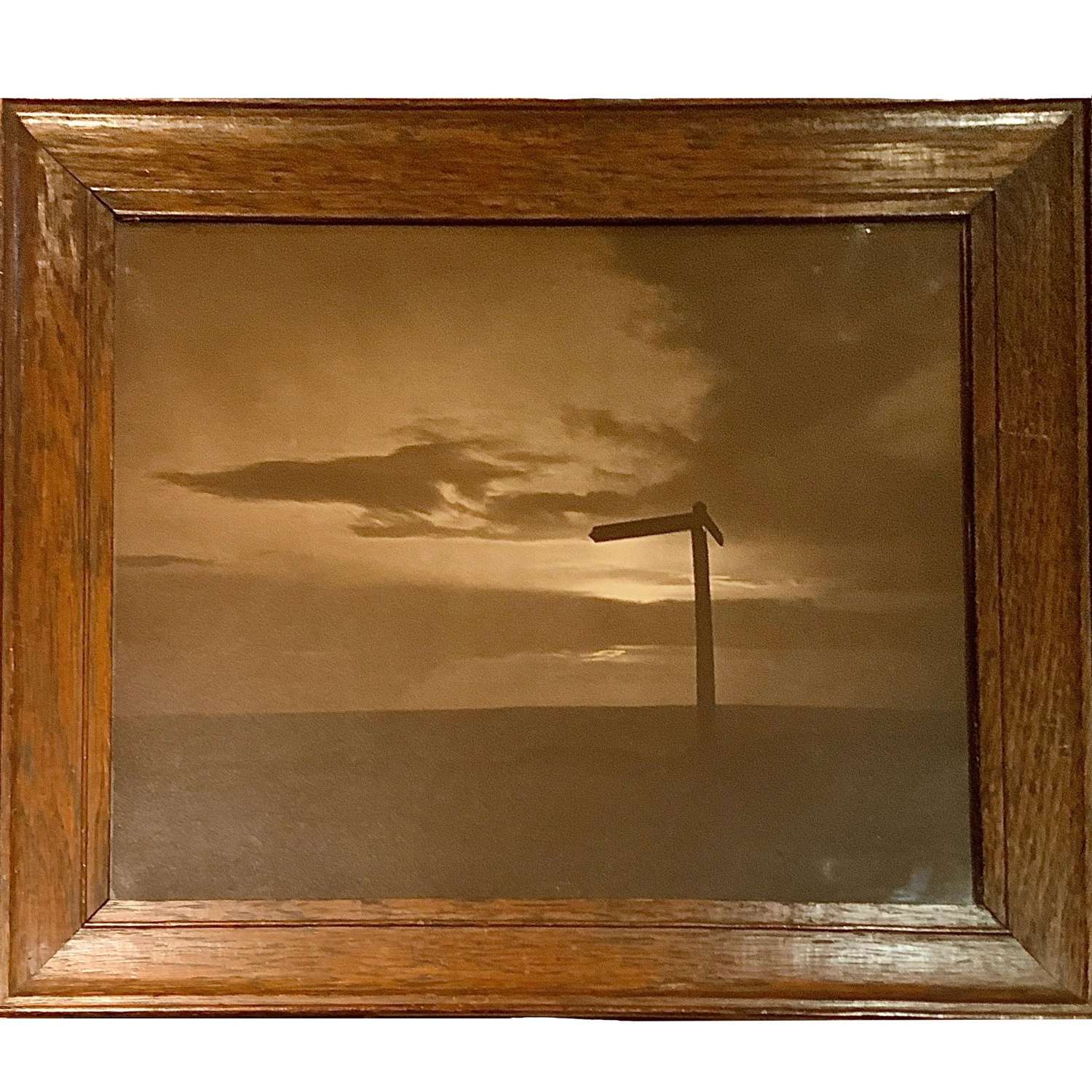
Code: 11233
Dimensions:
Frank Meadow Sutcliffe, Hon. F.R.P.S. (1853-1941)
"Quo Vadis?"
Iron-Silver (Van Dyke Brown) Photographic Print
In original oak frame with "Sutcliffe / Whitby" studio label verso
English
Circa 1895
Measures:-
36 cm x 44 cm (image)
47.8 cm x 55.7 cm (framed)
Provenance:-
Private collection U.K.
A hauntingly beautiful large-format landscape photograph depicting a 'fingerpost' style sign in a bleak moorland setting, silhouetted against a dramatic twilight sky. Presented in the phographer's original Arts and Crafts style oak frame with the remains of his "Sutcliffe / Whitby" studio label verso.
See Getty Museum 84.XM.496.7 and Art Institute of Chicago 2012.242 (Gift of Robert A. Taub) for smaller prints of the same image.
This striking image is one of Frank Meadow Sutcliffe's most successful photographs. It was probably taken on the North York Moors above Whitby around the same time that the Nobel Laureate Henryk Sienkiewicz's "Quo Vadis: A Narrative of the Time of Nero" was becoming a bestseller - hence Sutcliffe gave the same title to this image.
The Latin phrase 'Quo Vadis?' (which translates as "Where are you going?") is most famously used in the Apocryphal 'Acts of Peter' when St. Peter encounters a vision of the risen Christ carrying the cross along the Appian Way outside Rome. Peter asks "Lord, Where are you going?", receiving the reply "I am going to Rome to be crucified a second time", which prompts Peter to return to Rome to accept his own fate. The use of the phrase as the title here, therefore, transforms the photograph from being a conventional landscape with a possible metaphor of a 'crossroads', into a much more profound image. The remote fingerboard, which resembles a crucifix, takes on dramatically historical and religious significance: the viewer can almost imagine a Roman Legionary in this remote corner of the 'Province of Britannia' looking up to the sign and wondering which way they are heading and will they get there before dark? The sunlight can, perhaps, be interpreted as a vision of the Holy Spirit - reflecting a similar vision to that proposed by William Blake in his poem 'Jerusalem', where he muses on the legend that the youthful Christ had visited Britain alongside Joseph of Arimathea in his lines "And did those feet in ancient time, Walk upon England's mountains green?".
The image was originally suggested by Frank Meadow Sutcliffe's wife. The process used to make this print here is a technique called 'Van Dyke Brown', newly patented by Arndt & Troost in Frankfurt in 1895, which uses both iron and silver compounds to create images with particularly rich tones. In 1892 Sutcliffe was one of the founding member of "The Linked Ring" (or "The Brotherhood of the Linked Ring") a group of pictorial photographers whose aim was to promote the science of photography in addition to elevating its status as a fully recognised art form.
Although "Quo Vadis?" became one of Frank Meadow Sutcliffe's best-known images it was not without its critics: one correspondent wrote to the photographer that the composition was "no better than a gibbet".[1]
Notes:-
[1] p.398 "Journal of the Photographic Society of London" Volume 82, 1942